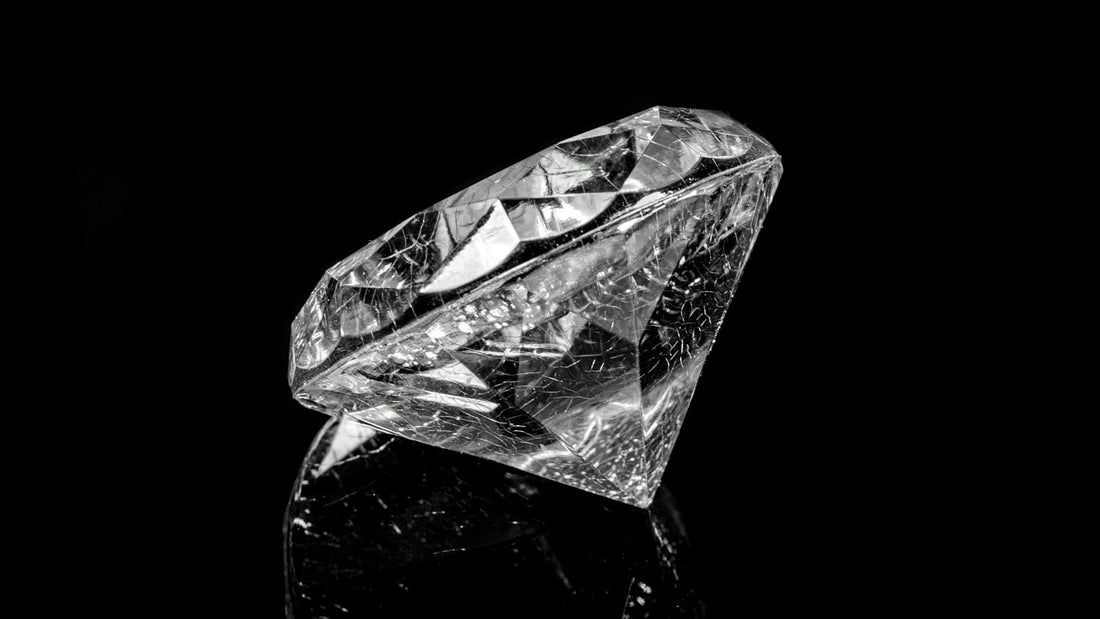Throughout time, people have been enchanted by a particular precious stone, namely diamond. The diamond symbolizes timelessness, beauty and is sought after worldwide, not least for its brilliance and durability.
The diamond has always attracted, charmed and fascinated. As a piece of jewellery, it is almost unrivaled – and the fact is that diamond is the world's hardest natural material. If we're talking room temperature, a diamond can only be scratched by another diamond.
What is diamond made of?
In its purest form, diamond consists of small pieces of carbon that are pressed together very hard over a very long time. In short, the diamond consists of carbon atoms arranged in a so-called crystal lattice structure. Thanks to that, the diamond gains exceptional strength
Sure, it's made up of the same material as the graphite in pencils, but the structure of the atoms in a diamond makes it the harder material out there.
How is a diamond formed?
Imagine that you get to look deep into the Earth's mantle where there is intense heat and pressure - and where the formation of diamonds takes place.
The carbon atoms crystallize over millions of years and turn into this precious gemstone. Bang, bang – soon we will have volcanic eruptions and then these diamonds will be pushed closer to the earth's surface. There they are mined, cut and polished, revealing their brilliance and glow.
Thanks to this process, a diamond has been created - visually captivating, but also with an amazing story on its neck about how geology can show its most beautiful side and accomplish great deeds like these.
What defines a good diamond?
In short, the quality of a diamond is about 4 C's.
First of all, we talk about the Cut - the grinding. The cut affects the brilliance of the diamond and its ability to reflect light. If the diamond is well cut, a dazzling play of light is seen that captivates the viewer (including you).
Then they talk about Color - the colour. A diamond can be colorless or pale yellow, or even brown. The most sought after and valuable are the colorless diamonds.
Next comes Clarity. Clarity shows whether there are internal flaws or external blemishes, and ideally neither should be present. Flawless diamonds are the clearest and thus the rarest.
Finally, we talk about Carat - i.e. the carat weight, which indicates the size of the diamond. The bigger the diamonds, the more valuable they are. A diamond with all these 4Cs in perfect balance exudes both beauty and value.
How to care for a diamond?
To begin with, you need to regularly clean your diamond, preferably with a soft brush, mild soap and warm water. Scrub the diamond gently to remove dirt that has accumulated.
Keep the diamond away from harsh chemicals such as chlorine and bleach. It can damage the diamond, so be sure to remove the jewelry before doing anything that will bring you into contact with those types of chemicals.
Also, be sure to store the diamond in a cloth case, jewelry case, or separate compartment when not in use. Thereby you prevent scratches or damage, as it does not come into contact with other jewellery.
Sometimes it can be good to take the diamonds to a jeweller, for example once a year. Through such a check, you can identify any problems with the jewelry, such as damage that needs to be repaired.
You should also avoid wearing diamonds in contexts where they are exposed to wear and tear. An example is if you play sports, carry heavy items or perform other types of activities where the diamond can be scratched or damaged.
Did you know that…
The largest diamond ever discovered is the Cullinandia Diamond, in South Africa in 1905. It weighed as much as 3106 carats and from it were created several large diamonds, including some of the British Crown Jewels.


